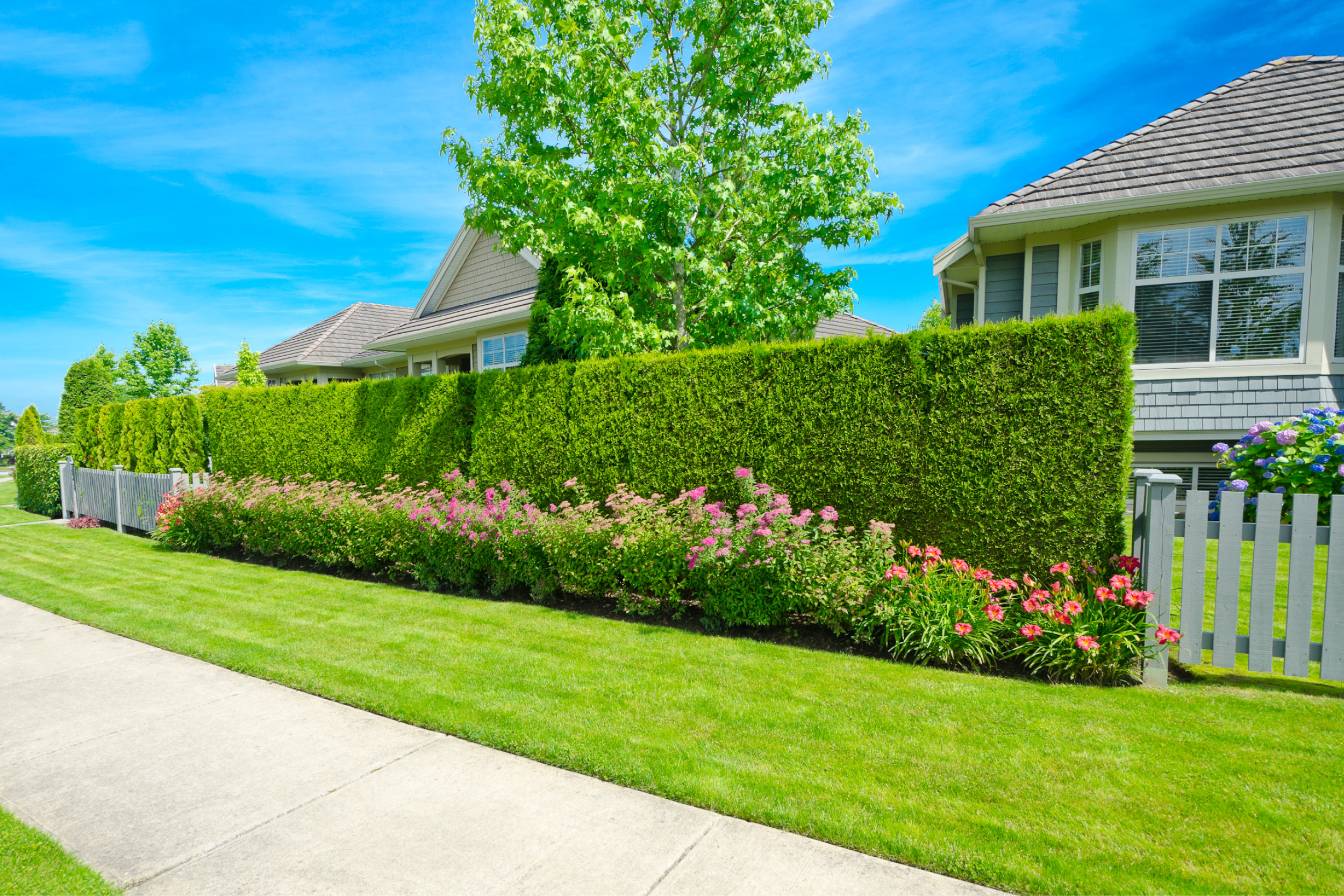Some people call hedges “living fences,” because both fences and hedges serve as privacy barriers. Hedges are certainly nicer to look at, and are quite easy to care for most of the time. Along with shrubs, they can provide the finishing touches on your backyard landscaping. The greenery is much more elegant than a fence, and it creates a more intimate space to enjoy with family and friends.
You can plant hedges to mark your property lines and line your driveway. Along with shrubs, they can highlight parts of your grounds, like a garden or patio. There are more benefits to hedges and shrubs, too. They can create sound barriers, wind barriers and reduce the amount of snow that comes onto your property.
Choosing the Right Trees for Hedges
Hedge trees can be divided into two main categories. Evergreens keep their color throughout the year, and they are excellent for providing privacy, as well as noise and snow reduction. Deciduous trees change colors and may have flowers, but they lose their leaves in the cold weather. Your choices will depend on the type of climate you live in.
If you want your hedge to be tall, the Green Giant Arborvitae and American Arborvitae can both soar up to 60 feet high. The Green Giant can grow about 3 feet a year, while the American’s height increases more slowly. Both are hardy and easy to grow. The Nigra Arborvitae is not as tall, topping off at around 30 feet; the Emerald Arborvitate is the smallest of these two evergreen shrub hedges, at about 15 feet. Other evergreen trees that grow into nice, thick hedges include holly and boxwood.
Using Shrubs as Hedges
You can plant a row of shrubs in front of your evergreen trees for added interest, but shrubs can grow into hedges without the backdrop. There are many different varieties of hedge shrubs, and some produce lovely flowers that attract birds and butterflies. One of the most familiar is the Rose of Sharon, which flows beautifully when thriving. Another is the Golden Ticket Privet, which sports bright yellow leaves and white flowers.
North Privet is another fast-growing shrub. The Scarlet Firethorn has a split personality; it grows as an evergreen in warm climates, but as a deciduous shrub in colder ones. It has thorny branches, white flowers and orange berries. It can also grow up to 18 feet tall.
Planting Hedges and Shrubs
Using a measuring tape and stakes, mark out the planting area, taking care to avoid utility lines. You can plant the trees or shrubs in a straight line, on a curve or however else you like. Know in advance how tall and wide your selected plants normally grow, and space out the potted shrubs accordingly.
If you plan for two rows, your hedge will be much thicker and more private. Dig out the holes, and lower in the shrubs. Water them well, and add some mulch. Faster growers will fill in more quickly.
Hedges and shrubs do not require a lot of maintenance, but you should be on the lookout for disease and pest infestations. You can keep them in shape with occasional pruning to remove dead growth. Many homeowners shear their hedges to give them formal appearances, while others prefer a more casual look. You can fertilize shrubs occasionally, but too much of this will increase growth and the need for trimming perhaps more than you anticipated.
Shrub Design Ideas
Shrubs can grow into living fences, but they can also add character and beauty to your yard. If you have a larger yard, you can create focus areas with seating and flowers. Highlight this with a few well-placed shrubs along the borders. Shrubs can also serve as backdrops for other focal points, like sheds and light posts, and they can highlight flowers and rock arrangements.
Not all shrubs are large, so you can place smaller ones along paths to outline them. If you like flowering varieties, pick a few colors that complement one another. These can also be coordinated with your hedges. Alternatively, you can plant larger green shrubs behind smaller, flowering ones for depth and contrast.
Many varieties of trees and shrubs change color throughout the year, and this should be kept in mind when planting. Imagine fiery orange and red leaves or white and purple flowers next to a dark green evergreen. With some dedicated thought and planning, you can design a backyard oasis that is private, relaxing and worth staying home for.


